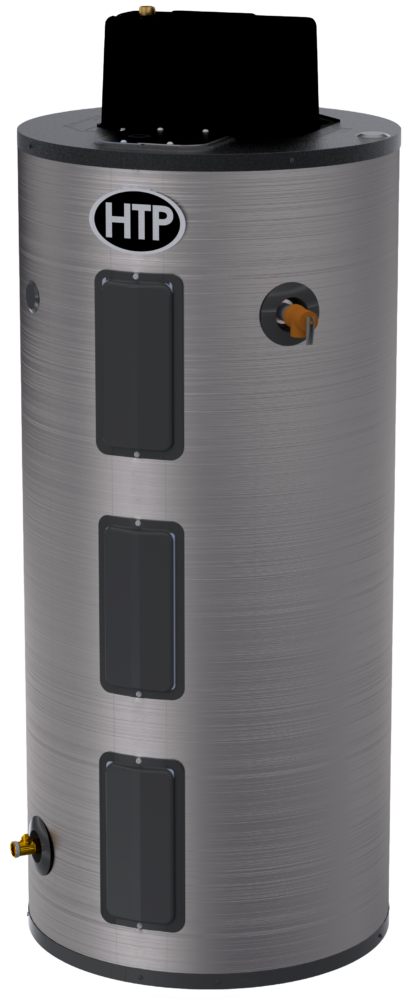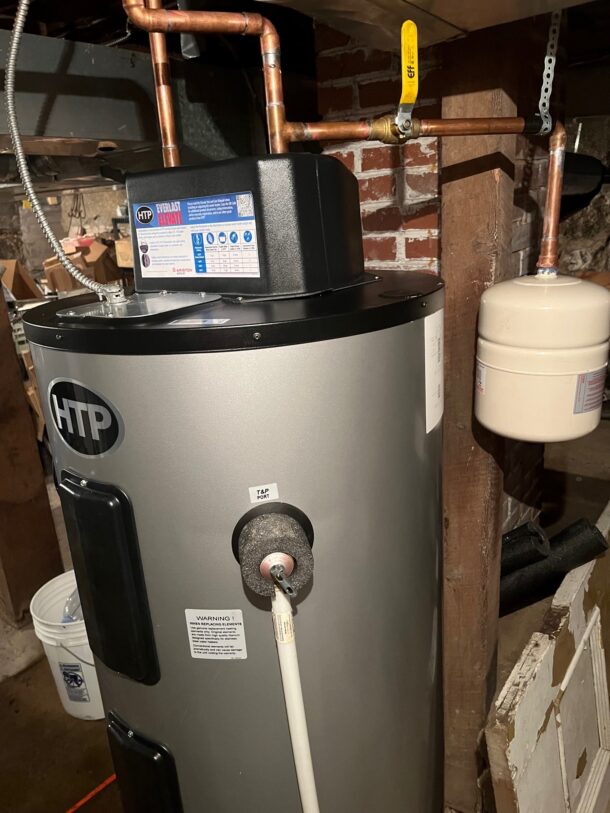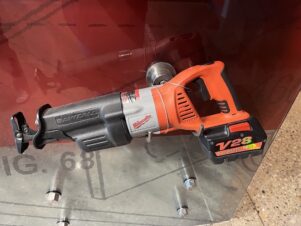80 Gallon Tanks, a Mainstay of Residential Construction, are Being Replaced With Smaller Units to Meet Energy Requirements
Over the next decade or so, many veteran plumbers will recall the good old days as the ones where they installed 80-gallon electric water heaters. Once standard in many homebuilding projects, those tanks are products of bygone eras. Like Tyrannosaurus Rex, black and white televisions and 2-hour baseball games, their days have come and gone.
The impetus for the change occurred with the National Appliance Energy Conservation Act of 1987, an act of Congress that regulates energy consumption of specific household appliances. The death knell for the 80-gallon tanks sounded in 2015, impacting all conventional residential electric water heaters with a storage volume greater than 55-gallons. After significant postponement, NAECA III enforcement finally went into effect on January 1, 2022. While the installed 80-gallon electric tanks were allowed to remain in use, many of them have now reached the end of their useful life and need to be replaced.
Water heaters were not alone in the focus of NAECA: dishwashers, air conditioners, refrigerators and nearly every household appliance needed energy improvements, and manufacturers had to make swift changes to their products. The message was clear: reduce the energy demand for every home appliance and do it now.
Canada does not have similar laws – yet — but one project in Nova Scotia included the retrofit of an 80-gallon tank with a 55-gallon tank. The HTP Elevate water heater installed by Adams Heating is much lighter and takes up less space in the mechanical room.
“It’s the equivalent of a much larger tank, but it freed up a lot of space in the mechanical room and is a lot more efficient than a standard water heater,’’ said Brennan Ferguson of Bruce Sutherland Associates, who recommended the HTP Elevate for the installer.

The HTP Elevate includes 316L Stainless Steel, which provides greater corrosion resistance and includes an integrated mixing vale that protects against scalding. The Elevate comes with a limited lifetime warranty. (Photo courtesy of HTP)
Out With the Old
The retrofit was not uncommon. The century-old, 2,000 square foot home in Mahone Bay used the water heater for domestic hot water. The home’s heat comes from an oil furnace.
While there was no way to determine the precise age of the existing water heater, it had seen better days, to put it mildly. “It was an incredible failure of their onsite tank,’’ Ferguson said. “It was done.”
The homeowner contacted Adams Heating, which contacted Bruce Sutherland Associates. As the HTP representative in Eastern Canada, Brennan Ferguson felt the application called for the 55-gallon Elevate. “With the smaller footprint, and the difficulty in accessing the basement, we thought this might be a good opportunity,’’ Ferguson said.
The space savings in the mechanical room, improved efficiency, stainless steel tank and lifetime warranty of the HTP Elevate made the choice easy for the homeowner. “Going down the stairs with the smaller tank was easy,’’ Ferguson said. “The much harder part was removing the 80-gallon tank. It had been there for some time. It took 3 or 4 guys to manhandle that tank to remove it.”
Unique Features
Several features of the Elevate make it one of the most unique products on the market.
The corrosion-resistant 316L stainless steel tank is an industry rarity but is a top-of-the-line feature. 316L grade stainless steel provides greater corrosion resistance than other types of stainless steel, and is commonly used in marine applications, chemical and petrochemical industries, food processing and pharmaceutical equipment.
The other distinguishing feature is an integrated mixing valve that protects against scalding by safely and consistently mixing outlet water to the desired temperature of the homeowner. Combined with an adjustable thermostat, the Elevate allows for safe and consistent temperature at the faucet while amplifying the total amount of hot water available by safely turning the thermostat up to store water as high as 170°F. An ASSE 1017 anti-scald mixing valve is factory installed, so only inlet and outlet connections need to be established. This valve was chosen for its safety features and proven certification.
“When the water comes up through the mixing valve, it ensures safety on the other end,’’ Ferguson said. “We never want to deliver water more than 120 degrees to the tap. What this concept does is create a tank that delivers hot water reliably with a much smaller footprint and is much more effective than a standard electric water.”
The tank is also lightweight and much easier to handle than glass-lined water heaters and includes low watts density titanium elements that increase corrosion resistance and extend element life.

In a residential project in Canada, workers replaced an 80-gallon electric water heater with a 55-gallon tank from Ariston, the HTP Elevate, that is much smaller, lighter and takes up less space in the home’s mechanical room. (Photo courtesy of Brennan Ferguson)
Game-Changing Legislation
NAECA’s energy efficiency mandate changed the game for manufacturers, who needed to develop different products to comply with the legislation. Manufacturers responded, but now is a critical time in the industry. The lifespan of a typical electric water heater is 8-10 years, and many of the water heaters installed just before the original legislation are on their last legs.
Panic, however, does not have to set in for homeowners or contractors. While there are multiple options, the HTP Elevate is one of the newer products that gives contractors and homeowners peace of mind for the long haul and is easily installed with the added benefits of increased space in the mechanical room, use of premium materials (stainless steel tanks and titanium elements), and a limited lifetime warranty.
“The small footprint and stainless-steel tank make this a really good product,’’ Ferguson said. “It is something we’re going to recommend for a lot of residential retrofits and new installations.”
Thomas Renner writes on architecture, building, construction and other trade industry topics for publications throughout the United States.




Join the conversation: